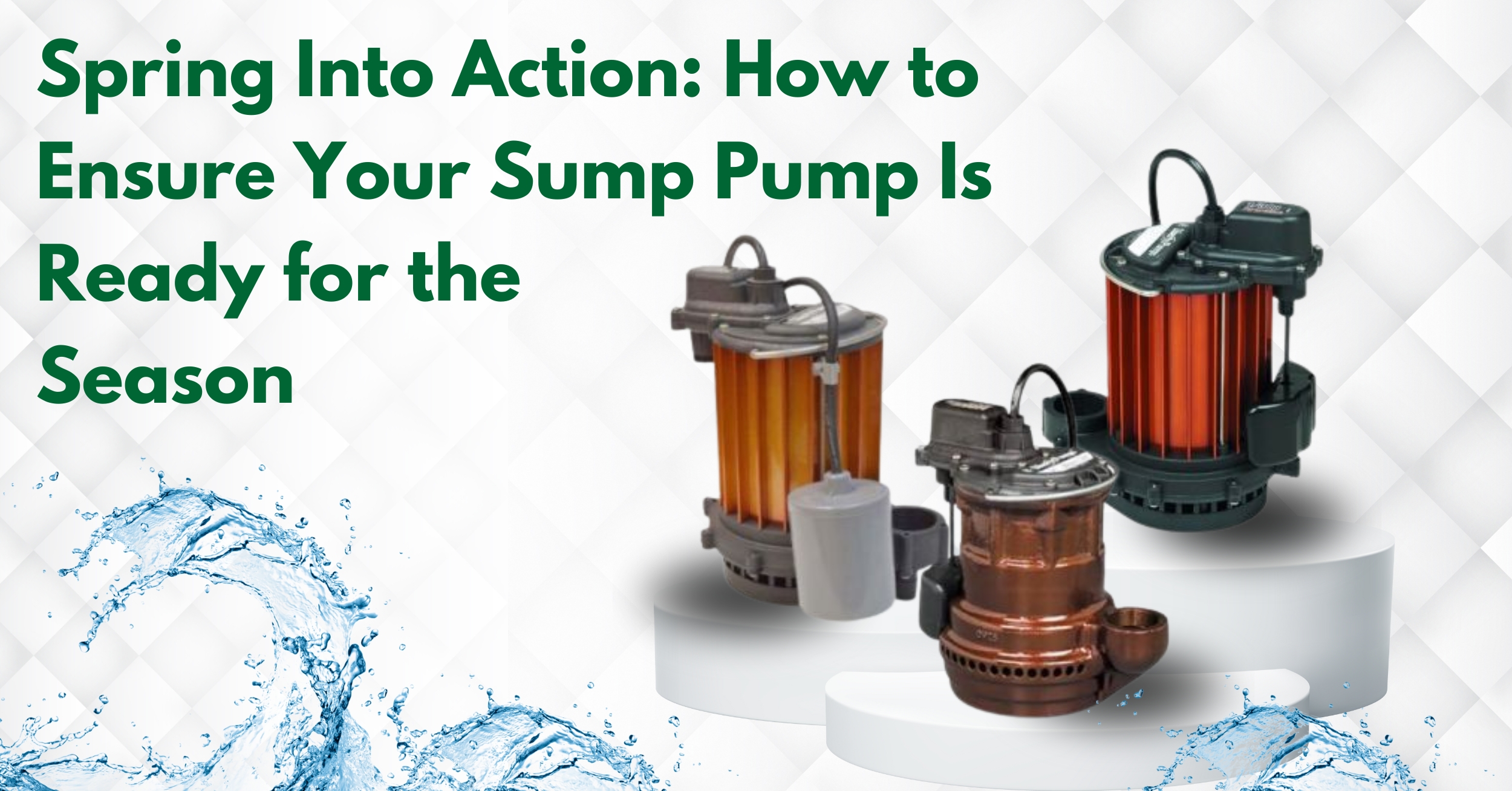Spring into Action: How to Ensure Your Sump Pump Is Ready for Action

As the snow melts away and spring showers begin to pour, it's essential to make sure your home's sump pump is in top-notch condition. A properly functioning sump pump can prevent costly water damage and protect your basement from flooding. In this guide, we'll walk you through actionable steps to ensure your sump pump is ready to spring into action when you need it most.
Conduct a Visual Inspection:
Start by visually inspecting your sump pump and its surroundings. Look for any signs of damage, rust, or corrosion. Ensure that the discharge pipe is clear of debris and properly connected. Additionally, check for any obstructions in the sump pit that could interfere with the pump's operation.
Test the Pump:
Testing your sump pump is crucial to verify that it's functioning correctly. Pour water into the sump pit until the float switch triggers the pump to turn on. Make sure the pump activates smoothly and efficiently pumps the water out of the pit. If the pump fails to start or doesn't pump water effectively, it may indicate a problem that requires further inspection or maintenance.
Clean the Pump and Pit:
Over time, debris, dirt, and sediment can accumulate in the sump pit and on the pump itself, potentially impeding its performance. Regular cleaning is essential to ensure optimal operation. Remove any debris from the sump pit and clean the pump thoroughly, including the impeller and intake screen. Additionally, consider flushing the sump pit with water to remove built-up sediment.
Check the Backup Power Supply:
Sump pumps rely on electricity to function, making them vulnerable during power outages—precisely when you need them most. To ensure uninterrupted operation, invest in a backup power supply such as a battery backup or a generator. Test the backup power source to ensure it's fully charged and ready to kick in when needed.
Inspect the Check Valve:
The check valve plays a crucial role in preventing water from flowing back into the sump pit once the pump shuts off. Inspect the check valve for any signs of wear or damage, and replace it if necessary. Additionally, ensure that the valve is installed correctly, with the arrow pointing away from the pump.
Consider a Sump Pump Alarm:
Installing a sump pump alarm provides an extra layer of protection by alerting you to potential issues before they escalate into a major problem. These alarms can detect high water levels in the sump pit or malfunctioning pumps, allowing you to take prompt action and avoid flooding.
Schedule Regular Maintenance:
Regular maintenance is key to keeping your sump pump in optimal condition. Consider scheduling annual inspections with a qualified technician to ensure everything is in working order. They can perform more in-depth checks, clean components thoroughly, and address any potential issues before they escalate.
Conclusion:
Taking proactive steps to ensure your sump pump is ready for action can save you from the headache and expense of basement flooding. By following these actionable tips, you can rest assured that your sump pump will spring into action when the next spring shower rolls in. Don't wait until it's too late—take the time to inspect, test, and maintain your sump pump today.

